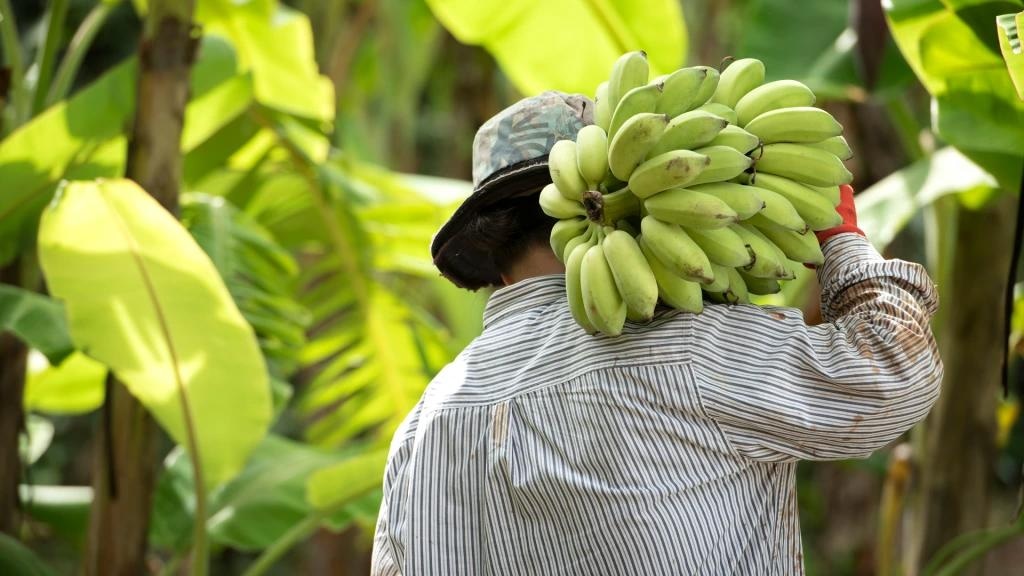Reviewed by Danielle Ellis, B.Sc.Oct 10 2022
People on the island of New Guinea are said to have domesticated bananas 7,000 years ago. However, the history of banana domestication is convoluted, and their categorization is widely discussed, as the boundaries between species and subspecies are frequently ambiguous.

Image Credit: Frontiers.
A recent study reveals that this history is highly complicated than earlier presumed. The findings ascertain that the genome of today’s domesticated varieties has traces of three extra, as yet unknown ancestors. The research was published in Frontiers in Plant Science.
Here we show that most of today’s diploid cultivated bananas that descend from the wild banana M. acuminata are hybrids between different subspecies. At least three extra wild ‘mystery ancestors’ must have contributed to this mixed genome thousands of years ago, but haven’t been identified yet.”
Dr Julie Sardos, Study First Author and Scientist, The Alliance of Bioversity International and CIAT
Complex domestication history
Except for the Fei bananas in the Pacific, domesticated bananas are assumed to have four common ancestors that were either distinct but closely similar species or subspecies of the wild banana Musa acuminata.
About 10 million years before they were first domesticated, M. acuminata appeared to have evolved in the northern borderlands between India and Myanmar. The fact that variants can have two (referred to as “diploid”), three (referred to as “triploid”), or four (referred to as “tetraploid”) copies of each chromosome and that many are also descended from the wild species M. balbisiana adds to the complexity.
Recent smaller-scale investigations have revealed that even this highly complex scenario may not represent the entire story and that more ancestors linked to M. acuminata may have been involved in domestication. The current findings not only confirm this but also demonstrate for the first time that these gene pools are ubiquitous in domesticated banana genomes.
Banana collecting missions
The DNA of 226 leaf extracts from the world’s biggest collection of banana samples was sequenced at the “Musa Germplasm Transit Centre” in Belgium.
These samples included four more distantly related wild species and hybrids as comparisons, 68 belonging to nine wild subspecies of M. acuminata, and 154 to diploid domesticated cultivars descended from M. acuminata. Many had already been obtained during special “banana collecting trips” to Indonesia, New Guinea, and the Bougainville autonomous territory.
The scientists first determined the degree of relatedness between cultivars and wild bananas, then created “family trees” based on the diversity of 39,031 Single Nucleotide Polymorphisms (SNPs).
They statistically analyzed the ancestry of each block using a selection of these—uniformly distributed over the genome, with each pair demarcating a block of about 100,000 “DNA letters.” For the first time, they discovered signs of three more ancestors in the genomes of all domesticated samples, with no known wild matches.
Mystery ancestors might survive somewhere
The mysterious ancestors may have become extinct a long time ago.
But our personal conviction is that they are still living somewhere in the wild, either poorly described by science or not described at all, in which case they are probably threatened.”
Dr Julie Sardos, Study First Author and Scientist, The Alliance of Bioversity International and CIAT
Sardos et al. know where to look for them. “Our genetic comparisons show that the first of these ‘mystery ancestors’ must have come from the region between the Gulf of Thailand and the west of the South China Sea. The second, from the region between north Borneo and the Philippines. The third, from the island of New Guinea,” Sardos adds.
Could help breed better bananas
It is unknown which beneficial characteristics these unknown ancestors may have contributed to domesticated bananas. Parthenocarpy, or the ability to develop fruit without pollination, is considered to have been inherited from M. acuminata, but cooking bananas owe a major portion of their DNA to the subspecies (or maybe separate species) M. acuminata banksii.
“Identifying the ancestors of cultivated bananas is important, as it will help us understand the processes and the paths that shaped the banana diversity observed today, a crucial step to breed bananas of the future,” says second corresponding author Dr Mathieu Rouard, likewise at The Alliance of Bioversity International and CIAT.
Dr Mathieu Rouard adds, “Breeders need to understand the genetic make-up of today’s domesticated diploid bananas for their crosses between cultivars, and this study is a major first step toward the characterization in great detail of many of these cultivars.”
Based on these results, we will work with partners to explore and genotype wild banana diversity in the three geographic regions that our study pinpointed, with the hope to identify these unidentified contributors to cultivated bananas. It will also be important to investigate the different advantages and traits that each of these contributors provided to cultivated bananas.”
Dr Julie Sardos, Study First Author and Scientist, The Alliance of Bioversity International and CIAT
Source:
Journal reference:
Sardos, J., et al. (2022) Hybridization, missing wild ancestors and the domestication of cultivated diploid bananas. Frontiers in Plant Science. doi.org/10.3389/fpls.2022.969220.